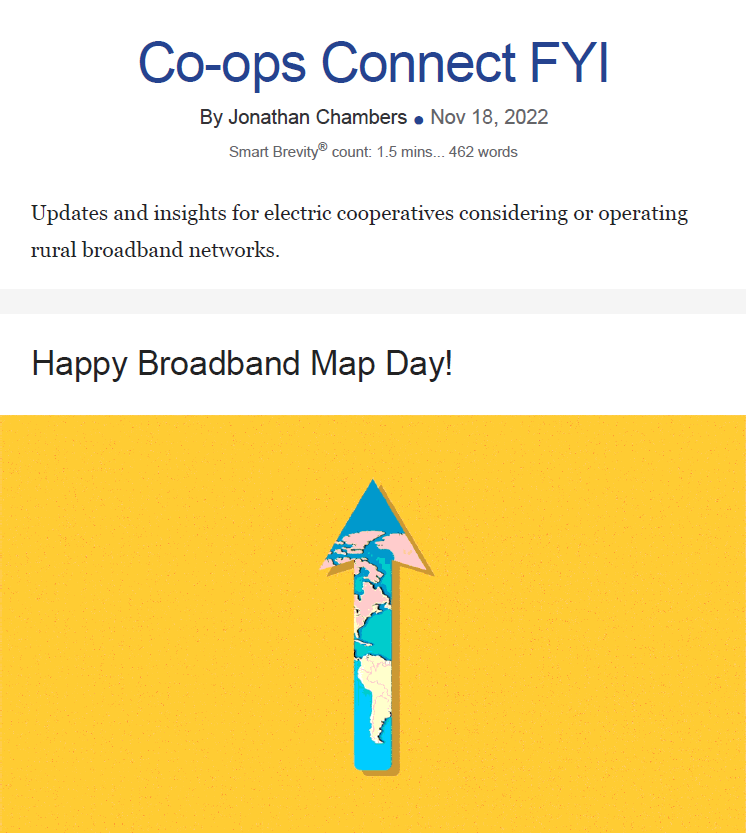Happy Broadband Map Day!
November 18, 2022
Today, Friday, November 18, the FCC intends to release the first iteration of the new location-specific broadband maps.
Next week, I’ll write up an analysis of the maps.
This week, since we haven’t seen them yet, I’ll offer these three observations in anticipation.
1. The DATA Broadband Act, which required the way the FCC collected, verified, and reported broadband availability, was signed into law March 23, 2020.
- Recall that March 2020 was when we were all caught up in the early throes of COVID.
- Over two and a half years have passed without new maps.
- The most recent publicly available data on broadband from the FCC dates back to a 2020 data collection.
- A lot has happened in broadband in the years since the COVID pandemic.
2. The maps are meant to show the availability and type of broadband at every location in the country.
- There will be missing locations, mistakes, incorrect self-reported data, and a lengthy challenge process.
- But it’s a start.
3. The Infrastructure Act was signed into law one year ago, on November 15, 2021.
- The largest rural broadband component of that Act, $42.45 billion in BEAD funds, cannot be allocated until the FCC publishes the broadband DATA maps.
- The language reads: “On or after the date on which the broadband DATA maps are made public, the Assistant Secretary [of Commerce] shall allocate” funding from the BEAD program to states and U.S. territories.The FCC has stated it will release new broadband maps on November 18 with the pre-production draft providing a more accurate initial picture of broadband availability throughout the U.S. (Source: FCC Fixed Broadband Deployment map screenshot, https://broadband477map.fcc.gov/#/)
So, Is This the Big Day?
1. Presumably, NTIA has seen advance copies of the maps and could announce the state allocation at any time after November 18.
2. However, it has been reported the NTIA Administrator wants to wait for the next iteration of maps.
- Wait, what? Two years and eight months hasn’t been long enough?
3. The allocation is a ratio of the number of unserved (lacking 25/3 Mbps) locations in a state divided by the number of unserved locations in the country.
- In short, while there will be errors in the new maps, those errors won’t necessarily change the ratio.
The bottom line:
Waiting for some newer, more correct version of maps will simply delay funding for rural broadband.
The Big Picture
Let’s get on with the BEAD program.
- The maps with all their flaws and warts are good enough for purposes of calculating a ratio.
- Since data will change every day, don’t expect that waiting for more accurate maps will be worth the wait.
- The statutory requirement has been met. Now, it’s up to NTIA to do its job.
